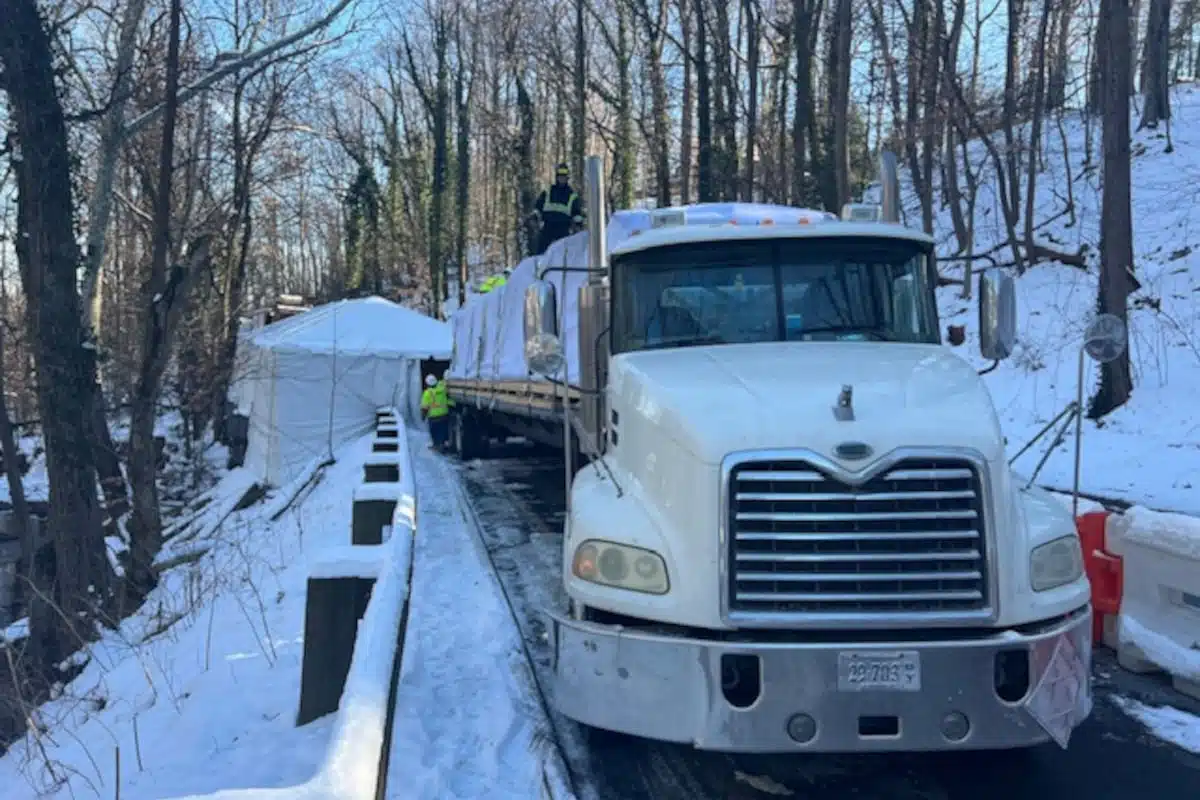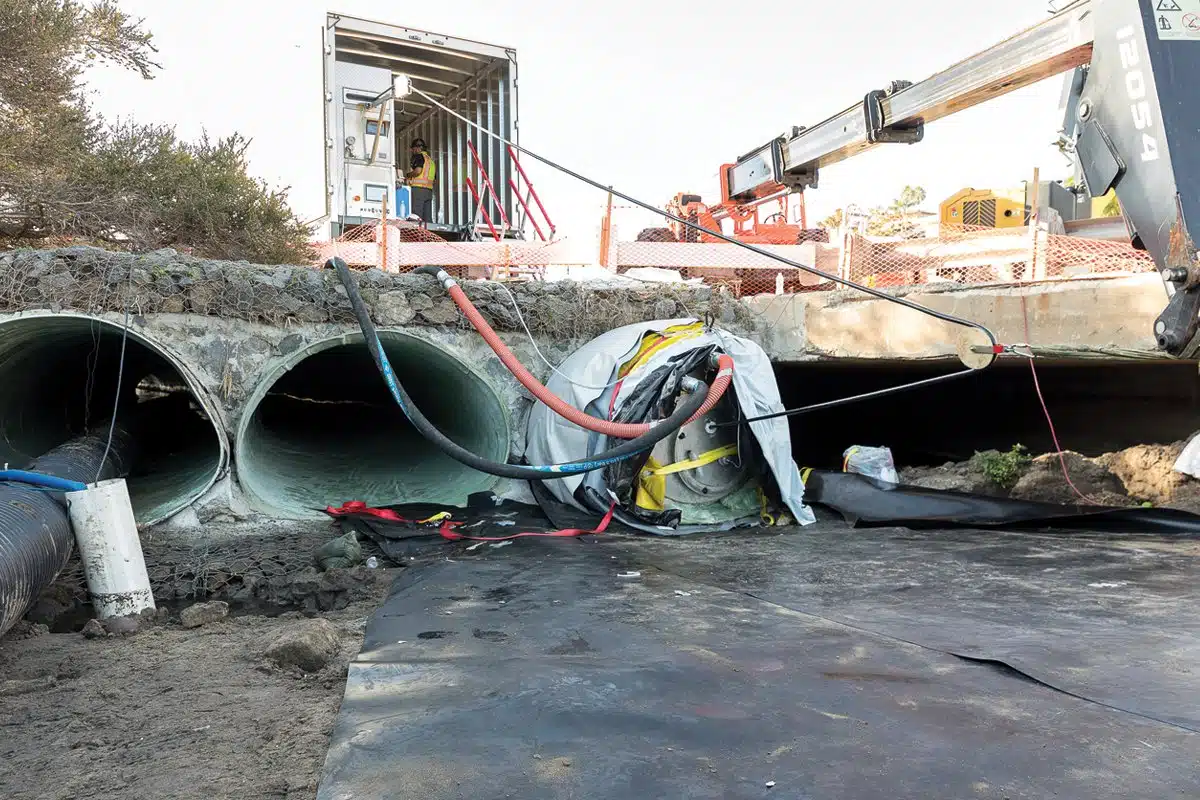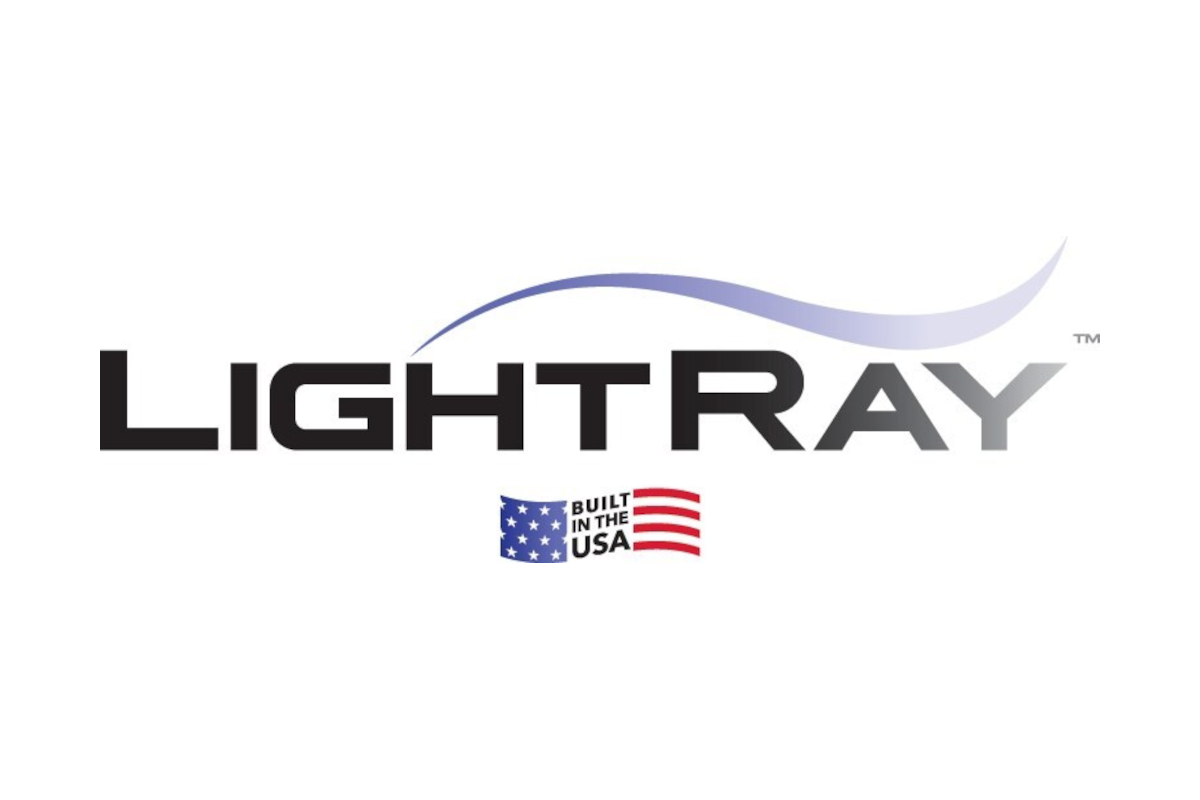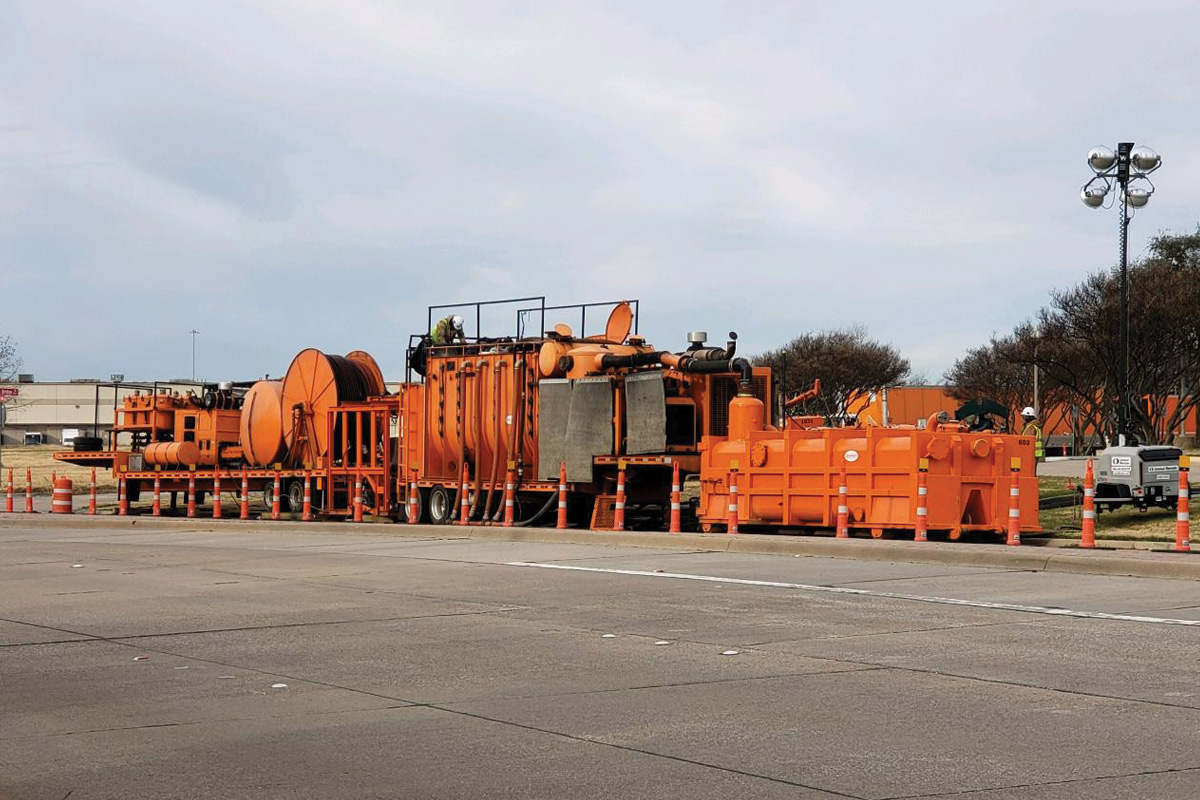
How to Clean Large Diameter Sewers
As we look into history, the first truck-mounted, combination sewer cleaners began their service in the late 1960s. This was no surprise because our industry was founded on solving problems. Who are the problem solvers? We are. This was the next technological advance from the widely accepted winch and bucket method. Technology has helped us continue to enhance our productivity.
We don’t need a deep dive to discuss technological changes, but two major changes to keep top of mind are extraction and pressurization. Extraction techniques have gotten greater due to enhancements in pump technology. Greater heads can be achieved while passing larger solids. This is extremely important while cleaning and using bypass pump systems.
Extraction pumps are available in different mobile mount shapes and sizes. They are available and achieve higher airflows and greater sustained vacuum. This is due in part to hardware materials and also more available horsepower. The same holds true for pressurized water technology. Water pumps are also able to offer more flow and higher sustained pressures than previous technology. Meanwhile this can all be packaged onto a truck chassis.
This does not mean that the truck and equipment do all the work. We need a properly trained and knowledgeable crew to work together.

Small Diameter vs. Large Diameter
Let’s first look at some differences between small-diameter and large-diameter pipe.
In small-diameter pipes, debris is typically organic and easily jetted. Debris amounts are often less and cleaning production per day is often measured in thousands of feet.
While larger pipe, often referred to as interceptors or collectors, has a continuous flow of water and often contains sand, silt, grit, gravel, roots, rocks, bricks, broken concrete chunks, large grease deposits, sanitary trash, deposits of ragging, floating masses of kitchen grease, car parts, manhole lids, and not limited to other broken pieces of infrastructure.
Levels of debris are often measured in feet and production cleaning production is measured in tons per shift. Knowledge of debris types will dictate pressures and flows needed to move the debris and positively influence cleaning efficiency.
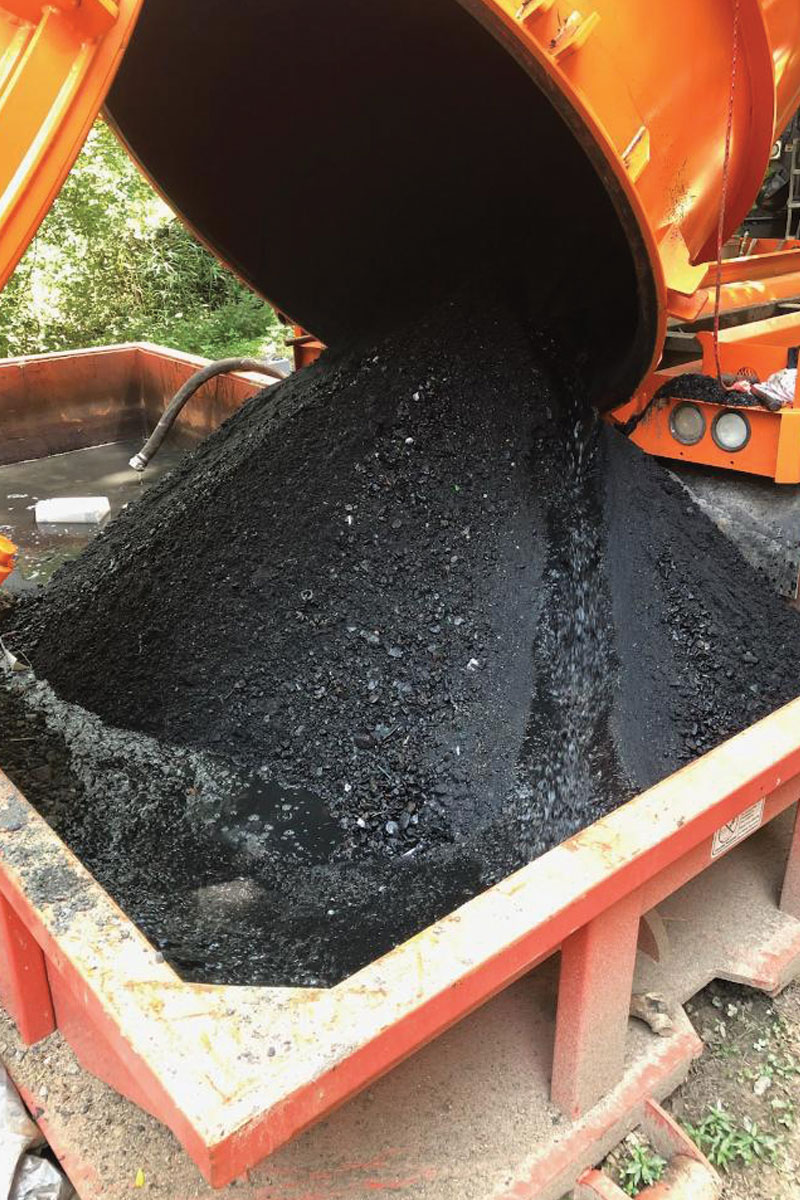
In its simplest form, hydraulic sewer cleaning is moving debris in pipe segments and effectively removing it from an access point.
The tool that moves the debris is often called the cleaning nozzle or cleaning head. For the purposes of our discussion we are going to refer this is as an aqueous shovel.
This shovel has a finite carrying capability much like a piece of earthmoving equipment, the bigger the bucket coupled with more horsepower means more debris can be moved. In the case of the aqueous shovel, the more water produced by more horsepower creates a larger “shovel” and that shovel can do more work in the sewer.
This larger aqueous shovel is often needed when we tackle large diameter pipes with large amounts of debris.
Keep in Mind
Larger pipes have larger types of debris.
Large diameter pipe typically has a large amount of flow feeding the system. Whereas a small diameter pipe often has lower amounts of flow with relatively low flow inputs. The small amount of water allows for easy evacuation at the access points. When cleaning large diameter pipes, it is often necessary to divert large amount of water or use alternative methods of extraction. Attachments, vacuum pumps and other fluidizing tubes are often used in this situation.
Larger pipes have a constant source of flow — either work with it or remove it. Pipe sizes are sometimes used to define a small diameter or a large diameter pipe. While this is true, it is not the only factor.
Focus on the depth of debris. For example, a 30-in. pipe half-full of debris contains four times more debris than a 15-in. pipe. As pipe size increases, the debris capacity exponentially increases, as well.
Pipe size is not the only factor in equipment selection — start with debris levels. We have just discussed depth of flow and pipe size and now let’s look at the lengths between access points.
Small-diameter pipe often has segment reaches of 300 to 500 ft. When looking at large-diameter pipe, it is not uncommon to have usable access several thousand feet apart. These extended lengths often require specialized equipment for larger hose reel capacity. Also note that with longer reaches brings a greater time to completion. A 300-ft small-diameter pipe may take a few hours vs. several thousand feet, which may take weeks or months. With longer hose reaches it is also important to understand the pressure loss that will be a major factor cleaning efficiency.
Cleaning along pipe lengths will add time due to the cleaning nozzle/head traveling out and retracting.
Often with these longer reaches, it is standard to see pipes much deeper underground. They are located 40-, 50- or 100-plus ft underground. Because of the weight of the shaft, these access points are often offset from the main interceptor.
It is often connected with a short horizontal connector also known as an adit. This type of nonconventional debris extraction should be prepared for during the preparation of the job. There will be an efficiency loss when removing material with this method.
When using an air mover, allow enough time for debris to convey the length of the tube and into the truck before adding more debris.
If a larger pump was selected, this will require greater consumption of potable water. A nearby hydrant may not offer the volume required for these larger flow water pumps. In many cases hydrants in neighborhoods may have restricted use for cleaning contractors other than for emergency purposes only. Water requirements may be large and maybe a substantial part of the cleaning operation. Lakes streams and creeks may not always be available for use. Some equipment does offer the ability to filter and reuse sewer water.
If jetting water needs to be trucked, factor the size of the tank, as well as the transport time.
This brief discussion illustrates some of the pitfalls that are common when embarking on large diameter sewer cleaning. By no means is this a statement that it is an impossible task, in fact it can be done very effectively. Keep in mind that it is more than just the equipment, a trained crew in partnership with the system owner is imperative to a successful project.
Joe Schotthoefer is vice president of operations for Doetsch Environmental Services.


